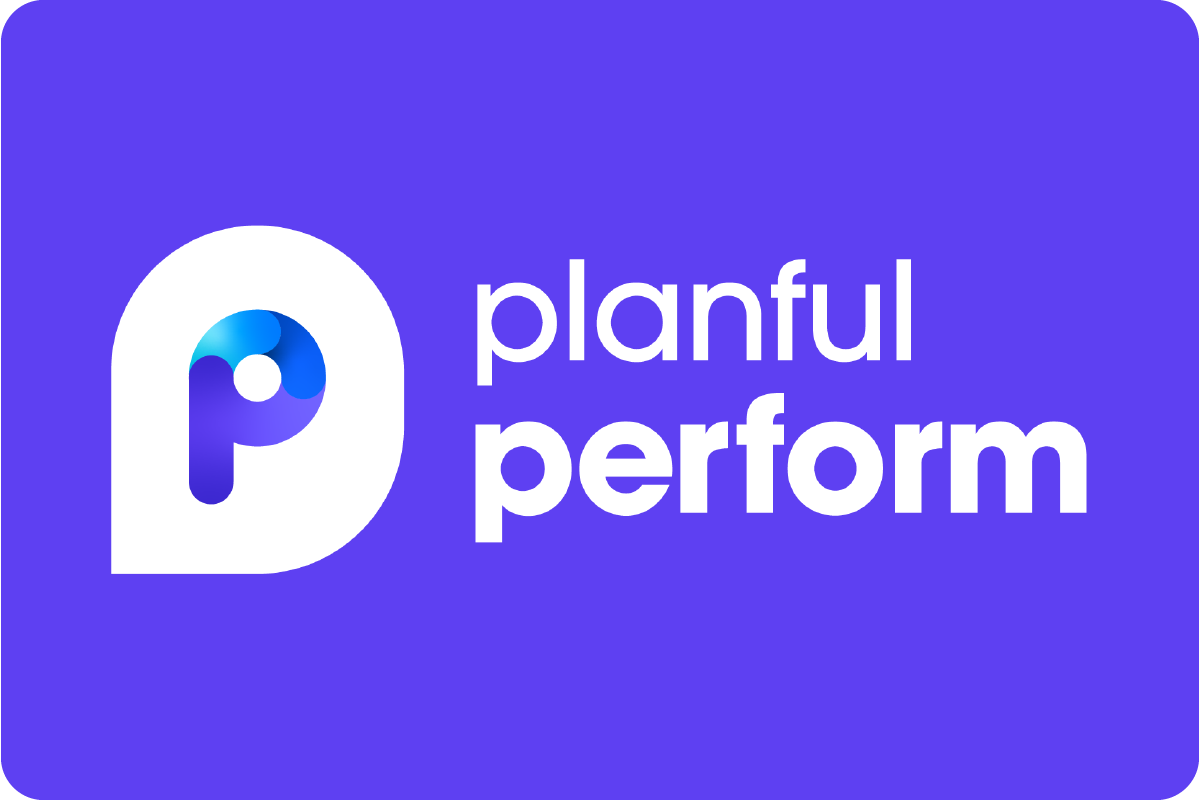Leaping Head First Into Vendor-Based Planning, Reporting, & Analysis | Adam Leash
- 0.5
- 1
- 1.25
- 1.5
- 1.75
- 2
Chris Ortega: Really excited for this session. Adam is a tremendous financial analyst. He's going to have a lot of insights, going to give you some vendor- based reporting, some key insights. So, I'll now turn it over to Adam Leash. Adam, showtime, baby.
Adam Leash: Thank you, Chris. So hello, ladies and gentlemen. My name is Adam Leash, and like Chris mentioned, I'm a financial business analyst at Planful. To start things off, let's break the ice. This is an iceberg model, and the purpose of this model is to shift your perspective to see beyond an immediate event. The tip of the iceberg is a small glimpse of what falls beneath the surface. In corporate finance, the process of studying the differences between actual and planned behavior through data is called variance analysis. In this visualization, the tip of the iceberg is the narrative or explanation inaudible the leadership and the executive team. The narrative guides strategic conversations, as well as data- driven decision- making. Although it may seem by many, it is completely driven by what falls beneath the surface. The discrepancies between budget and actuals come down to what's driving the business. However, if there is a misunderstanding of key drivers, the narrative can be misinterpreted. This emphasizes the importance of vendor- based planning, reporting, and analysis. So today, I'll be showcasing the power of Planful to simplify variance analysis and enhance your month close process through vendor- based solutions. In doing so, we'll be discussing the strategies that can help solve customer problems. Back when I first made my start in FP& A, I was given the opportunity to join my first ever quarterly financial meeting with leadership, and I was psyched. I prepared stacks of papers, ready to read between the lines to tell leadership what exactly happened, and I put blood, sweat and tears into these notes. I knew exactly how we performed and what happened in the detail, and I thought I was the man. However, during the meeting, I prepared for everything except for the question I was asked by my CFO, and he asked, why did we budget this way? I froze and panicked. I realized that I knew everything, including what happened, how it happened, but I knew absolutely nothing about why we do the things that we do. That awkward silence felt like a lifetime. Thankfully, my director came to rescue me and bail me out. Most of us have an embarrassing memory or story that helped shape our careers, and that day I was taught a valuable lesson, and it's that business drivers shape business decisions. If your annual planning process is not driver- based, then your strategic decision- making process could be misdirected. Employees are more likely to experience burnout when the work that they do is tedious and manual. For variance analysis, I used to manually export the budget, actuals, commentary, transactions, all separately. Then I would line them up in Excel, pivot off the data and look at trends. This process felt dysfunctional and there had to be a better way. It wasn't until recently that I learned how to automate and streamline these excruciating tasks. The disclaimer is this, there is not a one size fits all approach to vendor- based solutions, it is not an all or nothing scenario. By having this conversation, I invite all of you to be open- minded and challenge yourself to think differently. Ask yourself this question. What can my finance and accounting team do to be more data- driven? Since we're all in various industries and financial environments, we will face unique challenges. However, the principles and themes of this presentation stay the same. I'm a three- time Planful customer, both internal and external, and I think it's fascinating to see how FP& A teams customize their Planful application. From my experiences, I've taken small things here and there that have transformed my way of thinking about continuous planning. But more importantly, I've developed a stronger understanding of what it means to transform partnerships through business drivers like vendor- based solutions. No matter the industry, there are practical ways for Planful customers to simplify FP& A so that budget owners can become more invested in the process. What you'll find is that there is more connection, collaboration and communication when vendor- based solutions are implemented to bring people together. The core issue that customers face is that when there are overcomplicated processes and less of an emphasis on business drivers, there is less attention to detail and consequently partnerships suffer. For example, when data is unclear, there is an overall misunderstanding of how actuals hit the books and what forecast updates need to be made. I have worked with IT departments at three different companies, and if there's anything that I've learned about IT is that they spend a lot of money and they love technology more than they like budgeting, and I don't blame them. IT expenses can get complicated and we can't expect that budget owners eat, drink and sleep finance like we do, but we do have the power to make these concepts easier to understand and simplify month close so that there is higher engagement and efficiency. One example is integrating contract terms into the Planful system. If you can bring in contract terms through inputs and customize formulas to have the budget populate through outputs, then it reduces the possibility for error. Lingering problems tend to have a ripple effect in finance and accounting. The most concerning issues don't usually creep up to haunt you until it's too late, so I am here to tell you that now is the time to act. You should care about solving these problems, because although none of us have a magic crystal ball, vendor- based solutions allow you to have more control of your finances due to the ability to review data in a more systematic way through cause and effect. There's an acronym that I learned in grade school called KISS. Does anyone know what that acronym stands for?
Speaker 3: Keep it simple, stupid.
Adam Leash: Keep it simple, stupid, exactly. It's actually a design principle noted by the US Navy in 1960. The KISS principle states that most systems work best if they are kept simple, rather than made complicated. By keeping things simple in FP& A, it's easier to identify key drivers and retain information. When you completely understand your business drivers and have a higher degree of insight, support and direction, then there is increased transparency, accountability, and ownership. If you want to trust your business partners to own their budgets, then you need to provide them with the financial information that would empower them in their roles. Vendor- based drivers make templates easier to understand and simplify reporting, which increases the confidence that we have in the narrative to hold the leadership. Lastly, vendor- based solutions can help set clear expectations and remove collaborative friction as mentioned by Grant earlier today. So, what pain points do your stakeholders have? Chris Ortega, CEO of Fresh FP& A who introduced me, advises that if you want to stand out in corporate finance, then you need to help your business partners solve the most important pain that prevents them from doing what they truly want to do. In my prior roles, my goal was to support my departments by any means necessary, now my goal is more specifically geared to being an innovative problem solver, to reduce pain for my business partners, to enhance collaboration, to increase production so that we can all scale together. To accomplish this we must leap head first into organization, consistency and automation. This mindset changed the way we plan for contract renewals and software, tracked CapEx and managed the entire procurement process. FP& A is a team sport, and for that reason, we are better together. Equally as much, there are three vendor- based solutions that are better when used together as one. Vendor integration entails customizing your Planful application and connecting the vendor dimension with your ERP system. Bottoms- up budgeting is essentially budging by vendor at a department and account level and taking advantage of Planful's robust templates. Lastly, report automation is the transformation of rolling out vendor- specific reports using Planful features like report sets, report collections, substitution variables, and dynamic planning models. This is the full picture view. If you set up a vendor integration through your ERP system, then not only will you be able to budget for Salesforce directly, but you will be able to report on Salesforce directly, all within the same report. So, how can we take budgeting and reporting a step further? If we want to prioritize organization, consistency and automation, then leaping head first into Planful vendor integrations is the answer. Data- driven decision- making is only as powerful as the data that you are given, so bridge the gap between Planful and your ERP system by bringing in more specific data that can help us tell a more accurate story. A great example of this is wedding planning. I am getting married in November, and I'm currently going through the process of figuring out how much everything costs. Although it makes me nauseous, I find more contentment in knowing exactly what everything costs at an individual level. I prefer this, because it allows us to prioritize our spend more efficiently and make budget cuts where necessary. For example, taking out the flowers, because they cost way too much. Let's walk through a step- by- step process to see how easy it truly is and how impactful vendor- based solutions can be. So, step one is to choose a partner. The purpose of choosing a partner is to map vendor two actuals and connect Planful to your enterprise resource planning system, otherwise known as your ERP. It's important to note that you must work with a Planful partner who is able to provide these services. Here at Perform, we have amazing teams that are in attendance that can help you provide direction through consulting and professional services. Depending on your ERP system, you could establish a connection through data for the following dimensions, customer, vendor, product, service, event. This has proven to be successful when using ERP systems like NetSuite, which is what we use. In addition to an ERP, there are other integrations that I recommend for driver- based budgeting, such as an HR for employee data and CRM for customer and sales data. So, step two is to establish a vendor hierarchy. Creating a Planful hierarchy is required to set a chart of accounts, and this is equivalent to creating Planful departments or accounts. So, let's use NetSuite as an example. If we were to bring in vendor data into Planful from NetSuite, the two systems must be in sync and have the same vendor code. When actuals flow through for a new vendor, a new code gets placed in the auto- created folder pictured on the screen. However, what I've learned recently is you can reduce this routine maintenance through a master data management process, such as live updates, automated processes set by our Planful solution implementers. This is groundbreaking technology. So by a show of hands, how many of you believe that budget templates can cause confusion and misunderstanding? I have seen it all. I am a victim of disorganized budgeting templates. I've seen outdated cluttered sublines, information that is just so overwhelming, it's just not helpful at all. Budgeting isn't supposed to be a mystery. It's tough as it is to do variance analysis when there are gaps in the planning templates. Every budget tells a story and bottoms- up budgeting gives every dollar an assigned name. Bottoms- up budgeting is best for recurring expenses, examining historical trends by vendor, planning for renewals, and one- time expenses in which the vendor has already been identified. This puts a greater emphasis on vendor selection, negotiations, and shopping around for the best deal when you give your business partners enough financial information to empower them in their roles. So, here are some pushbacks that I've heard. One is budget owners don't know their vendor yet, or the specific amount that they're going to allocate during the annual planning process. My response to this is, that's okay. The budget is static, but the rolling forecast is dynamic. So once you are able to identify the vendor, you can always update the forecast. Concern too or pushback too that I've heard before is the vendor may not exist in Planful during the budgeting process. To that I would say, if it doesn't exist in Planful, then it doesn't exist in your ERP system, and most likely what you'll need to do is request a new vendor through accounting, legal or through your procurement team. Step three is to select the template of choice. There are a variety of templates that you can choose from, and right now we are only going to compare and contrast two, the single copy and the entity copy of the global template. One of these enables vendor integration, the other does not. The single copy is a standard template which allows you to add sublines for vendors, but you are unable to map to the system. This is a great template, but if you want to take the leap, I recommend that you use the entity copy because of its flexibility and customization tools. You can directly map budget to the vendor chart of accounts. I have to be honest when I say I underestimated the capabilities of the Planful software and underutilized the tools and resources that are available. So I'm here to tell you that you have everything you need to take the leap, all you need to do is click allow to modify template and insert lines, and you have the ability to customize it however you'd like. There's so much flexibility that you can combine the entity copy with what you are currently using now, or you can create separate templates for each account roll- up. For example, a template for SAS subscriptions, a template for outside services, a template for marketing expenses. Step four is to add columns and map to your department entity. What information would allow you to streamline your budgeting process? Personally, I think it's as straightforward as start month, total contract amount and contract length. I believe this is a great place to start, because most vendor contracts are cut and dry, but what you could also do to take it a step further for the more complicated contracts is add columns for units and cost per unit. A note section also adds more detail, such as when third priority providers are used or when multiple products or services are being purchased from the same vendor. Once you decide on your columns, then you can map the template to your departments of choice and provide visibility to a certain demographic of Planful users. Set five is to set your budget. Once you create the template, you can now add vendor lines and link them to the vendor dimension through destination account, which can be found when you input in the template. For example, if we added lines for ADP and NetSuite, we can control the outputs based on our input assumptions and amortize the expense for the next 12 months based on a January contract start month. If your company closely monitors cash, then you can expand the template to capture payment timing from a row or column perspective. Additionally, the event dimension is used to group together expenses for specific causes, which increases accuracy in reporting. Marketing is a fantastic example of this, because they can track their advertising dollars with more efficiency, budget based on run rates and plan for large events like Perform. All of the expenses for Perform can get grouped under this one dimension. Report automation. How can we bring this all together? We can automate reports and streamline month close to unite teams. By focusing on vendor- based solutions, the month close process can be made simple. Once we build budget versus actual reports for FP& A and business partners, then we can automatically distribute reports through Planful, identify variances quickly and efficiently, add detailed commentary and update the rolling forecast. For example, if human resources is significantly over budget in training services, then the vendor will be called out through a budget versus actual report, and we would then figure out ways to reduce the forecast to make up for this overage. As an analyst, I can now spend more time on why we were over budget and what can be done to get back on track and less time on finding the variance itself. Step six is to run a report for vendor detail by account and department. Right here, we have a basic vendor report that needs some work, and so how can we finalize this report so that it's ready for distribution? Well, I would say that you could save this as a report specifically for a department like the finance team. You could create a header to make it look pretty, you could add more vendors and incorporate different GL roll- ups as shown on the income statement. But most importantly, I would create column sections for month to date, quarter to date, and year to date as a way to validate the data and provide a different perspective. In regards to reducing collaborative friction, my prior company created a column that would populate the words variance commentary required when a variance was greater than$20, 000, for example. I really like this idea, because it encourages order and structure during month close and forces FP& A and business partners to collaborate. So, let's take a look at the ways that you can make reporting more simple. So, the Planful reporting features align with the strategies of organization, consistency and automation. There are three problems that Planful's reporting features can solve. Problem one is the chance for human errors while creating manual reports. The way to get around this is to utilize report sets that embody repetition and consistency, so that there is a smaller probability for reporting issues. Column sets lock in variables like time and scenario, whereas row sets lock in variables like departments and accounts. From my experience, that's been one of the most beneficial ways to create these report sets. Once you start gaining the complex gap and non- gap reporting, you are going to want to take advantage of these and make sure that the formulas are precise. One example is to build a row set specifically for the vendors that roll up to G& A, sales and marketing, R& D, cogs. Problem two is tedious report maintenance. The solution is that substitution variables help with automating time and scenario. All you need to do is simply roll forward the variables in cube settings every month, which takes 10 seconds. Lastly, problem three is that FP& A department spend too much time exporting reports for others. I believe that this is one of the most underutilized features in reporting, but it packs a major punch. Think about all the time you could save. The last thing you want to do with your time is export reports for others. What's stopping you from automating one more task? The last life- changing reporting feature that Planful offers is the ability to tackle complex analysis. By taking advantage of dynamic planning models and the spotlight reporting add- in feature in Excel, you can build, save, refresh flexible models without having to re- pull data. This is intended for vendor and customer level detail. Let's use product and customer as an example. Customer and sales metrics can be automated in here through a CRM integration like Salesforce. Finally, you can focus on driver- based budgeting for KPIs using run rates and build sophisticated models for what- if analysis. There are two aspects of dynamic planning that make it more flexible than standard reporting. You have the ability to drag and drop dimensions and expand views, and you can add formulas, columns and rows as if you truly were in Excel creating your own model from scratch. Analyzing product and customer data can open up an entire world of possibilities and give you an edge during the annual planning process equally as much as vendor- based solutions. When used together, vendor and customer data are extremely powerful tools. There's something to be said about data integrity and having complete confidence in the numbers. This allows you to spend more time on analysis and less time on data. If a new hire opened up your budget template, would they be overwhelmed? This organization can send FP& A departments backwards when their systems are not properly maintained. Turnover spiked during the Great Resignation, and some companies are still trying to catch up, because they lost their system administrator. When this happens, usually the financial performing management tool like Perform is neglected, and this is yet another example why vendor- based solutions are essential. Simplifying your month close process and making templates easier to digest is you doing your part to fulfill Planful's vision for zero training. Many Planful customers have withstood the toughest of challenges, like Janet Golla from Capitol Petroleum Group, who transformed not only her FP& A department, but her whole organization. Janet's testimony proves that when driver- based budgeting is made a priority, then templates tend to be more organized and business partners tend to be more invested in their own results. So I joined the Planful team, because I recognized how powerful the technology was and is, and it has taken so much weight off my shoulders over the last few years. Equally so, I recognized that Planful has an amazing support system of people who truly want to help you learn, grow and succeed. I learn more about the software every single day, and it humbles me. Even the most advanced Planful users will tell you that they're still being challenged to think outside the box. Wherever there's complacency, there is less growth and less progress, and so I recommend that you continue to press in into learning more about the product and discovering ways to streamline and automate your processes even further. Don't leave Perform without making a plan for getting trained, asking for help and taking advantage of what the software is capable of. In variance analysis, a great narrative not only states the past and the present, but it also encompasses what needs to be done for a better future. As I leave you with this quote by Vincent inaudible, my advice to you to stop being stuck in the weeds and put in the work now so that you can rest later. Small wins add up over time and they pay dividends, which can completely transform an organization. So with that being said, thank you for your time. Do you have any questions?
DESCRIPTION
Transaction details add robustness to data-driven decision-making, especially when GL account, department, and vendor insights can be extracted. But aligning budget and actuals at the vendor level can be overly complicated, tedious, and inefficient. Join Adam Leash, Financial Business Analyst at Planful, as he showcases the power of Planful to simplify variance analysis and enhance your monthly close process. You’ll also learn how to take the next step in your automation journey by maximizing the potential of structured planning templates, dimension integrations, and month-end close reporting.
Today's Guests








